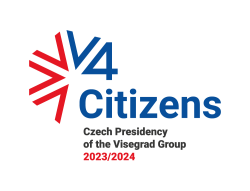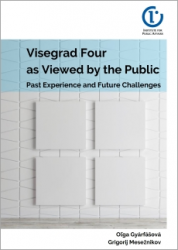
| Mon | Tue | Wed | Thu | Fri |
|---|---|---|---|---|
| 12 | 11 | 10 | 8 | 9 |
| Mon | Tue | Wed | Thu | Fri |
|---|---|---|---|---|
| 18 | 13 | 12 | 12 | 14 |
| Mon | Tue | Wed | Thu | Fri |
|---|---|---|---|---|
| 20 | 11 | 12 | 11 | 13 |
| Mon | Tue | Wed | Thu | Fri |
|---|---|---|---|---|
| 24 | 12 | 14 | 15 | 14 |
Andrzej Wajda: Polish Cinema’s Critical Chronicler
A look at the work of the late Andrzej Wajda and his provocative, challenging presentation of Polish history
Andrzej Wajda, one of Europe’s finest filmmakers, whose career spanned more than six decades, has died at 90. The Polish national mythos is the key to understanding his work. Wajda’s approach to the Polish themes that dominate his work was often self-critical, but Wajda was not an iconoclast who mocked Polish mythology like the novelist Witold Gombrowicz, for example. Rather, Wajda had a great love for Polishness, yet very often his Polish characters were Greek tragic heroes; their shortcomings (and perhaps Poland’s own romantic insurrectionary tradition) precipitated the fall of Poland.
Thematically, Andrzej Wajda was the most Polish of Polish filmmakers. While other famous Polish directors, such as Roman Polański and Krzysztof Kieślowski, dealt with universal topics, Wajda was strictly Polish in his subject matter. Tellingly, his biggest foray into universal themes flopped. In 1996, he adapted Tomek Tryzna’s novel Miss Nobody into a film. This story of the abusive relationship between a worldly-wise city girl and a modest newcomer from the country deals with typical Bildungsroman topics of adolescence as well as the conflict between traditional and consumerist values. Miss Nobody–awkward, even creepy–bombed at the box office and was hated by the critics. The consensus was that Wajda was best at dealing with Polish history rather than with the growing pains of teenage girls.
Even Wajda’s films that were technically not about Poland, such as 1982’s Danton, a historical epic about the conflict between Georges Danton and Maximilien Robespierre in post-Revolutionary France, really were about Poland. Danton is a man of the people who is more concerned about breadlines and poverty than revolutionary dogma, unlike the doctrinaire Robespierre. Despite Wajda’s statements to the contrary, the film was widely seen as an allegory for what was happening in communist Poland. It is no coincidence that Wojciech Pszoniak’s Robespierre bears a striking resemblance to the dogmatic Marxist General Wojciech Jaruzelski while Gerard Depardieu’s populist Danton made viewers think of Solidarity leader Lech Wałęsa.
Most of Wajda’s films, however, deal with explicitly Polish topics. In a 2011 interview, Wajda called himself “the Jan Matejko of Polish cinema.” Matejko (1838-1898) painted Poland’s past when the ancient nation was partitioned between Russia, Prussia, and Austria. Wajda’s approach to Polish history recalls that of Matejko’s painting Stańczyk (1862). Stańczyk shows the titular court jester of three Polish kings, morose upon hearing that Poland has lost Smolensk to Russia. In addition to entertaining the Polish kings, Stańczyk was the only courtier who could criticize the king. Matejko’s Stańczyk invites the question: “Were Poland’s misfortunes only caused by her conniving neighbors, or are internal factors also to blame?”
This self-critical approach was apparent in Wajda’s work from the beginning. His second feature, 1956’s Kanał, tells the story of the 1944 Warsaw Uprising, when the Polish resistance tried to liberate the Polish capital. The 63-day uprising ended tragically: the city was reduced to rubble and 200,000 people were killed. The film follows a unit of Polish partisans retreating from central Warsaw through the sewers, trying to not drown in human waste and not be smothered by the poisonous gas the Germans threw in the sewers. During World War II, Wajda himself was a member of the Home Army. Kanał does not question the partisans’ bravery. However, there is a memorable line in the film that leads to reflection on the reasonability of this insurrection. “You know this fight is pointless, don’t you?” the unit’s captain asks a colleague. “Yes. It’s the Polish way,” is the reply.
Another early work, 1960’s Lotna, tells the story of a horse used by the Polish cavalry during World War II. The film controversially shows Polish cavalry charging at German tanks. This never occurred (there was a cavalry charge at Wehrmacht tanks, but by Mongols, not Poles); Indro Montanelli, an Italian newspaperman in Poland, fabricated the event to arouse sympathy for the Poles in Fascist Italy. Perhaps Wajda included this scene as a symbol of the internal weakness of the Polish state during the German-Soviet invasion of 1939. Naturally, the Poles were outnumbered and lacked military technology to stop invasion, while, despite treaty obligations, France and Britain did not aid Poland. However, the Polish government’s defection to Romania on September 18 did not help. In interviews, Wajda was extremely critical of the “chaos” he remembered from September 1939.
Similarly, Wajda’s opus magnum, 1958’s Ashes and Diamonds, questions the armed resistance to Poland’s Stalinist government. The film’s hero, a daring partisan named Maciek, is sent to assassinate a local communist party leader. In the final scene, Maciek succeeds, but he is also shot shortly thereafter, while Poland’s political fate is unchanged. What was the point of this act of bravado?
However, Wajda wasn’t blindly critical of the Polish nation. In addition to creating Stańczyk, Jan Matejko also depicted glorious events in the history of the First Polish Republic, such as the Polish-Lithuanian victory over the German Teutonic Knights at Grunwald in 1410, or the Polish-led victory of Christian forces over the Turks at Vienna in 1683, a symbol of Poland as the savior of the West.
Likewise, Wajda chronicled Solidarity’s victory in getting the communist government to sign an agreement to its demands in 1981’s Palm d’Or winner Man of Iron. The drama incorporates documentary footage from the early days of Solidarity featuring union leader Lech Wałęsa. It is a valentine to Solidarity.
Equally romantic is 2013’s Wałęsa: Man of Hope. The film celebrates Lech Wałęsa as a hero; in fact, Wajda once called him “the Kościuszko of our times” (Tadeusz Kościuszko was a Polish patriot who led rebellions against Tsarist Russia in the late 18th century and trained Americans in their fight for independence from Britain). Although Wałęsa shows the titular protagonist collaborating with the communist security forces under pressure in the 1970s, the film’s overall tone is hagiographic; consequently, right-wing reviewers who dislike Wałęsa for political reasons criticized it. In the 1980s, Lech Wałęsa was a symbol of hope for millions of people around the world. Is glorifying Solidarity’s struggle for Polish freedom, which captured the world’s hearts, such a crime?
This coexistence of a self-critical approach to the fallible human beings who made Polish history with a genuine love for the Polish ethos is perhaps best seen in 1990’s Korczak, about Janusz Korczak, the Polish-Jewish doctor who refused a hiding spot outside the Warsaw Ghetto so he could accompany Jewish orphans to their deaths. The film shows a damning picture of anti-Semitism in pre-war Poland. Korczak loses his job as host of one of Poland’s most popular radio broadcasts solely because of his ethnicity. In Korczak’s orphanage, a looming romance between a Gentile girl and Jewish boy becomes impossible when the former realizes that she cannot be with a Żydek (a mildly derogatory Polish term for Jews). Meanwhile, Korczak’s attachment to Poland is shown as he volunteers for the Polish Army in September 1939 despite being 60; in the ghetto, he refuses to take off his Polish uniform. In addition to the examples of anti-Semitism listed above, the film shows Korczak’s numerous Polish fans offering him hiding places, risking the death penalty.
Tributes to Andrzej Wajda in the world press paint him as a chronicler of Poland’s turbulent history. That he was. However, his films were much deeper than that. Above all, as opposed to Adam Mickiewicz’s notion of Poland as the “Christ among the nations,” they were an attempt to present the Polish imagined community that Wajda so loved as one composed of ordinary humans, whose frailty, folly, and passion, and sometimes romanticism, sometimes brought about tragedy.

The author and Andrzej Wajda in Krakow, December 2014.
Filip Mazurczak is a Polish and American journalist and translator. He holds degrees in History and Spanish and Hispanic Studies from Creighton University and in International Relations from the George Washington University.
Read the original text in Visegrad Insight.
This article has been automatically generated from the Visegrad Insight magazine website, a project funded by the International Visegrad Fund. The opinions expressed in this article do not necessarily have to represent the official position of the donor, the Visegrad Group, or the publisher (Res Publica Nowa).







